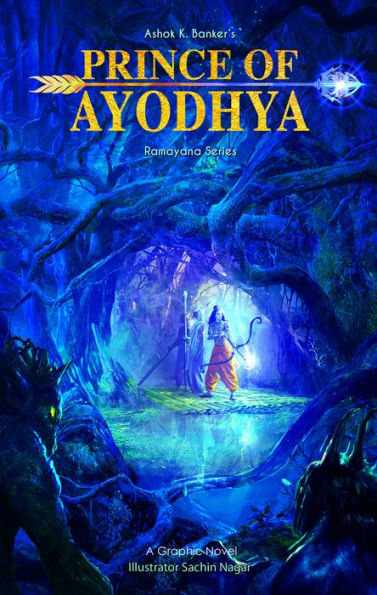Prince of Ayodhya: Ramayana Series
The first volume in a series of graphic novel adaptations of Ashok Banker's epic retelling of the Ramayana.
Prince of Ayodhya begins with Rama and Lakshman's youth. Accompanied by Rishi Vishwamitra, they set out to Bhayanak Van on a dangerous mission to save their kingdom of Ayodhya. Meanwhile, evil is brewing, both within and without, the city.
Written by international bestselling author Ashok K. Banker, and illustrated by award-winning artist Sachin Nagar, this graphic novel adaptation of the Ramayana is like no other Ramayana you may have read or seen before.
1136270098
Prince of Ayodhya begins with Rama and Lakshman's youth. Accompanied by Rishi Vishwamitra, they set out to Bhayanak Van on a dangerous mission to save their kingdom of Ayodhya. Meanwhile, evil is brewing, both within and without, the city.
Written by international bestselling author Ashok K. Banker, and illustrated by award-winning artist Sachin Nagar, this graphic novel adaptation of the Ramayana is like no other Ramayana you may have read or seen before.
Prince of Ayodhya: Ramayana Series
The first volume in a series of graphic novel adaptations of Ashok Banker's epic retelling of the Ramayana.
Prince of Ayodhya begins with Rama and Lakshman's youth. Accompanied by Rishi Vishwamitra, they set out to Bhayanak Van on a dangerous mission to save their kingdom of Ayodhya. Meanwhile, evil is brewing, both within and without, the city.
Written by international bestselling author Ashok K. Banker, and illustrated by award-winning artist Sachin Nagar, this graphic novel adaptation of the Ramayana is like no other Ramayana you may have read or seen before.
Prince of Ayodhya begins with Rama and Lakshman's youth. Accompanied by Rishi Vishwamitra, they set out to Bhayanak Van on a dangerous mission to save their kingdom of Ayodhya. Meanwhile, evil is brewing, both within and without, the city.
Written by international bestselling author Ashok K. Banker, and illustrated by award-winning artist Sachin Nagar, this graphic novel adaptation of the Ramayana is like no other Ramayana you may have read or seen before.
22.99
In Stock
5
1

Prince of Ayodhya: Ramayana Series
168
Prince of Ayodhya: Ramayana Series
168Paperback
$22.99
22.99
In Stock

Product Details
| ISBN-13: | 9789380741925 |
|---|---|
| Publisher: | Steerforth Press |
| Publication date: | 12/15/2020 |
| Series: | Campfire Graphic Novels: Campfire Mythology |
| Pages: | 168 |
| Product dimensions: | 6.51(w) x 10.29(h) x 0.37(d) |
| Age Range: | 13 - 17 Years |
About the Author
From the B&N Reads Blog
